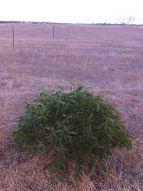
A tough little Eucalyptus porosus – one day soon this entire ex-paddock will be filled with carbon-guzzling natives. Note the plot markers in the background.
I had a great morning today checking out the progress of our carbon-biodiversity planting experiment out at Monarto Zoo. What a fantastic effort! Briony Horner and her team have made some amazing progress.
If you haven’t read about what we’re up to, here’s a brief re-cap:
Late last year we were awarded an Australian Research Council (ARC) Linkage Project grant in which we proposed to examine experimentally the cost-benefit trade-off between biodiversity and carbon using a replicated planting regime. The approach is quite simple, but it will take many years to pay off. What we are asking is: how many different species and in what densities are required to restore a native woodland from an over-grazed paddock that provide the biggest long-term biodiversity and carbon benefits simultaneously for the lowest costs?
Our basic approach is to apply a few biodiversity (native monoculture, medium diversity, high diversity) and planting density treatments (low and high spacing) to plots within blocks repeated across a landscape. We want to test whether the time-consuming and expensive high-density, high-diversity plots end up sequestering more carbon and housing more species once the forest has matured then the other treatments. However, if we can get away with (i.e., end up with the similar carbon sequestration and biodiversity) lower tree densities when planting, and fewer species planted, then our costs will go down.
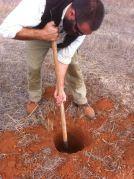
Digging the pitfall traps
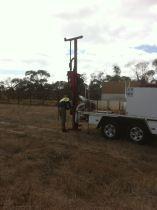
The soil-core drilling rig
Briony invited me out this morning to see the progress, and I was blown away! To date we have slashed the grass & weeds, set up and marked out the 80 25 × 25 m experimental plots in 10 blocks, begun digging the reptile pitfall traps, plotted out the bee & invertebrate trapping grids, and taken initial soil cores for carbon analysis. A few photos are included here to demonstrate.
Next week, co-investigator Margie Mayfield is coming down from UQ to help with the baseline biodiversity monitoring. In May, the entire site will be burnt and treated with herbicide to kill the weeds, and then planting begins in June! I can’t wait to see all the plants in the ground.
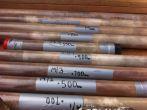
Freshly dug soil cores for carbon analysis
What was merely an idea only 6 months ago is turning into a fully fledged, 20-ha experiment thanks to Briony and her amazing project management.
Many thanks as well to the ARC, Zoos South Australia, David Chittleborough and his soil team, the South Australia Department of Environment, Water and Natural Resources (DEWNR) and the Australian Flora Foundation for co-investment.
CJA Bradshaw
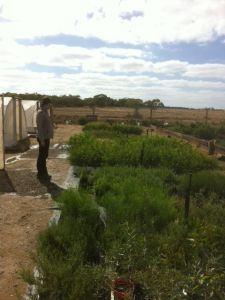
Briony and her babies ready for planting
-34.917731 138.603034
